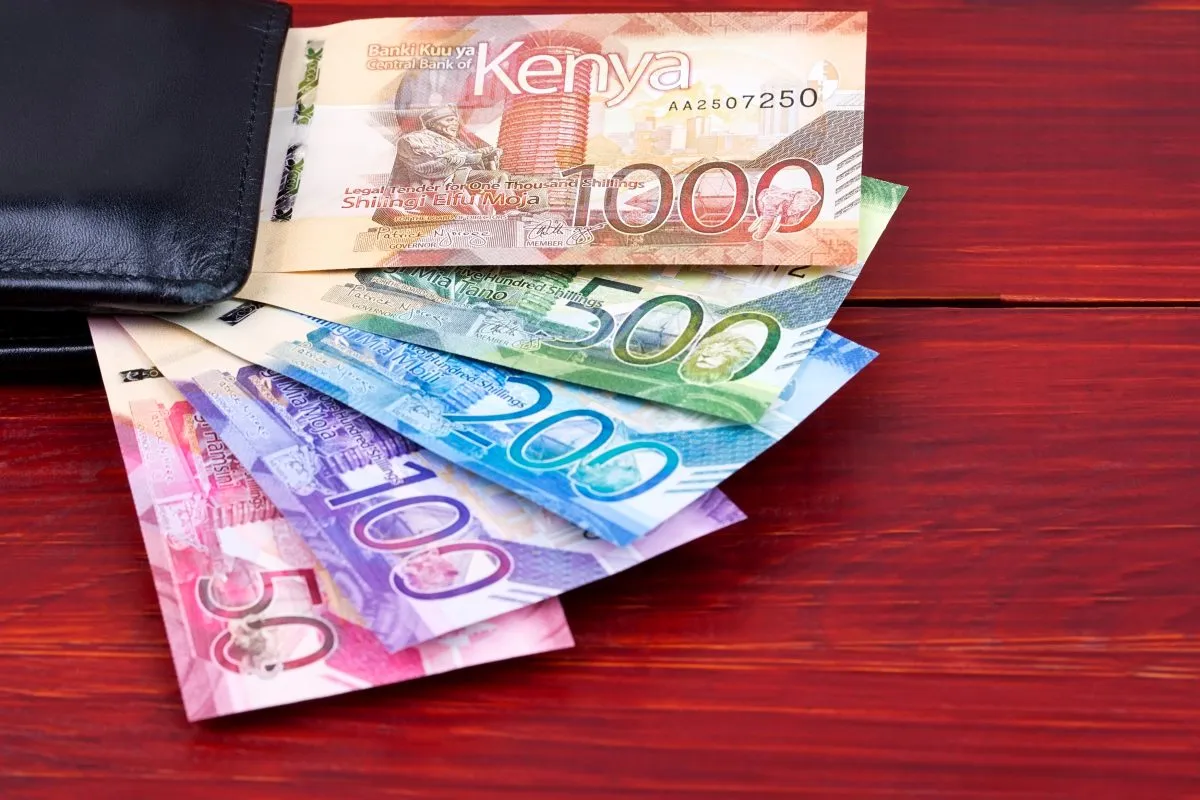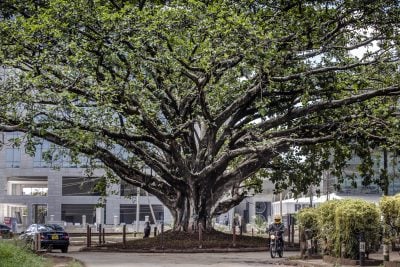The Kenyan shilling has now been in near-constant decline for almost three years – and there’s little sign of a recovery anytime soon.
In February 2020, just before the outbreak of the coronavirus pandemic, the shilling was trading at 100 against the US dollar. Since then, the greenback has strengthened by 33% to trade at 135 at the time of writing in mid-April 2023. The decline has become particularly steep in the last 12 months, in which time the shilling has lost almost 15% in value. Why is the Kenyan currency performing so poorly?
Many emerging market currencies, including the shilling, have been hit by the global hike in interest rates led by the Federal Reserve in the US. With inflation in the US hitting 9% last year, the US central bank moved rapidly to increase rates in a bid to get prices back under control. Interest rates in the US, which were practically at zero throughout the pandemic, have increased significantly in the last year – with the Fed’s new target range being between 4.75% and 5%. The European Central Bank (ECB) has hiked its marginal lending rate to 3.75%.
This has caused major problems for the Kenyan shilling. Higher rates have helped make the US dollar, which is also deemed one of the world’s safest financial assets, even more attractive to foreign exchange traders and have further dampened the appeal of holding riskier currencies such as the shilling. While the Central Bank of Kenya (CBK) recently increased rates by 75 basis points to 9.5%, partly to prop up the shilling’s appeal, some analysts believe this is unlikely to be enough to halt the currency’s decline.
Shilling becomes less attractive
Charlie Robertson, global chief economist at Renaissance Capital, an emerging-markets-focused investment bank, tells African Business that the CBK’s move “means Kenya has only raised rates by 250 basis points [bp] since 2021, while the Fed has hiked by 475bp, and the ECB has hiked by 350bp. That’s still a difference which favours the dollar or the euro over the shilling. Since October, the Fed has hiked 175bp and Kenya by 125bp.”
As “the gap between Kenya’s interest rates and US and European rates has narrowed,” the shilling has become less and less attractive, putting the currency on a downward spiral of depreciation.
The shilling was also affected by the rebound in global economic activity last year when countries began to open up again after the various coronavirus lockdowns. This further drove up demand for the international currency of trade, the dollar, and led to relative declines for currencies such as the shilling. Felix Ochieng, markets analyst at Nairobi-based fintech Hisa, tells African Business that “the sudden global growth in demand for the dollar brought in a survival-of-the-fittest scenario.”
“Developed economies have a stronger hand in accessing the dollar,” Ochieng explains. “This means emerging markets have to pay more, meaning the value of the dollar goes higher and the shilling goes weaker.”
Forex problems
These dynamics have also contributed to the shortage of US dollars that Kenya is currently experiencing. The country’s foreign exchange reserves are now near a decade low and are insufficient to cover four months’ worth of imports.
A stronger dollar has also caused wider economic problems, which have weighed on the Kenyan shilling. Higher interest rates in the US mean that interest payments on dollar-denominated debt become more expensive. A weaker shilling makes it doubly expensive to service debt priced in dollars. As Edwin Dande, CEO of Cytonn Investments, an investment management firm based in Nairobi, points out, “over half of our external debt is dollar-denominated, of which $2bn is due in about a year”.
The fact that repayments are becoming increasingly expensive – and that investors fear that Kenya might be unable to pay these debts – is potentially dragging the shilling down further. The World Bank has warned that Kenya is at high risk of defaulting on its public debt, which stands at over $73bn.
Aggravating these concerns is the fact that, despite the country’s economic challenges, the government remains committed to expensive policies, such as President Ruto’s flagship “Hustler Fund” offer of reasonable credit to poorer Kenyans. Investors are concerned that the government is determined to pursue high-cost policies at a time when Kenya is struggling to service its debt.
Anti-government protests spread
Partly because of the challenging economic climate, Kenya has also been experiencing high levels of political instability in recent months, further increasing the country’s risk profile in the eyes of international investors – and therefore reducing demand for the shilling. Raila Odinga, who leads Kenya’s main opposition party, has consistently claimed that Ruto “stole” the election through fraud and voter suppression.
While the Supreme Court reaffirmed Ruto’s victory in September last year, supporters of Odinga have taken to the streets of Nairobi and other major cities in protests that have sometimes turned violent. Businesses have been forced to shut down, because of fears of looting, dampening economic activity. Dande tells African Business that “with the ongoing maandamanos [demonstrations], things are likely to get worse given disruption to business”.
While the maandamanos certainly contribute to the risks associated with holding the Kenyan shilling, the protests are also having the direct impact of lowering government taxation revenue. Ochieng notes that “with businesses closing down due to demonstrations, the Kenya Revenue Authority (KRA) missed its monthly revenue target in February, and they will definitely miss it again in March”.
Dwindling tax revenues will raise further questions about the government’s ability to pay its debts and fund its spending commitments. Dande believes that “we need to take steps to reduce government spending, so we are in a stronger fiscal position,” but there is little indication that the government agrees.
Kenya faces economic challenges on several fronts – not to mention the prospect of a drought and potential humanitarian crisis, with over 5m people at risk of not having sufficient access to food and water. A weakening currency is a factor in this problem as well. Kenya is a net importer and runs a trade deficit of over $1bn a month, meaning that food imports, which are usually priced in dollars, are becoming ever more expensive. Food prices globally have also risen because of the disruption to grain and wheat supplies by the war in Ukraine.
Worst could still be to come
There is a best-case scenario in which the shilling starts to recover and make sustained gains against the dollar – if conditions improve dramatically. Robertson says “a positive scenario of sharply falling US rates in the fourth quarter of 2023, low oil prices, a better tourism season, and no drought” could allow the exchange rate to stabilise at KSh135-40/$. At least in theory, a weaker currency can also have positive economic effects, such as encouraging more diaspora remittances and making industries such as tourism more competitive.
However, there are few signs that this is how developments will unfold. Robertson notes that a “worst-case scenario”, which would involve the government defaulting on its debt, “could send the shilling weakening to 20-30% below its long-term average rate –168-182/$ by the end of 2023”.
Will the Kenyan shilling manage to regain any ground throughout 2023? Current conditions would suggest that is unlikely. The US Federal Reserve remains committed to a course of higher rates and has taken a hawkish tone in recent weeks. The dollar therefore remains strong. The maandamanos are continuing. The government is still pursuing high-spend policies.
In Dande’s words, “there isn’t a lot of good news on the horizon”.
Want to continue reading? Subscribe today.
You've read all your free articles for this month! Subscribe now to enjoy full access to our content.
Digital Monthly
£8.00 / month
Receive full unlimited access to our articles, opinions, podcasts and more.
Digital Yearly
£70.00 / year
Our best value offer - save £26 and gain access to all of our digital content for an entire year!

 Sign in with Google
Sign in with Google 



